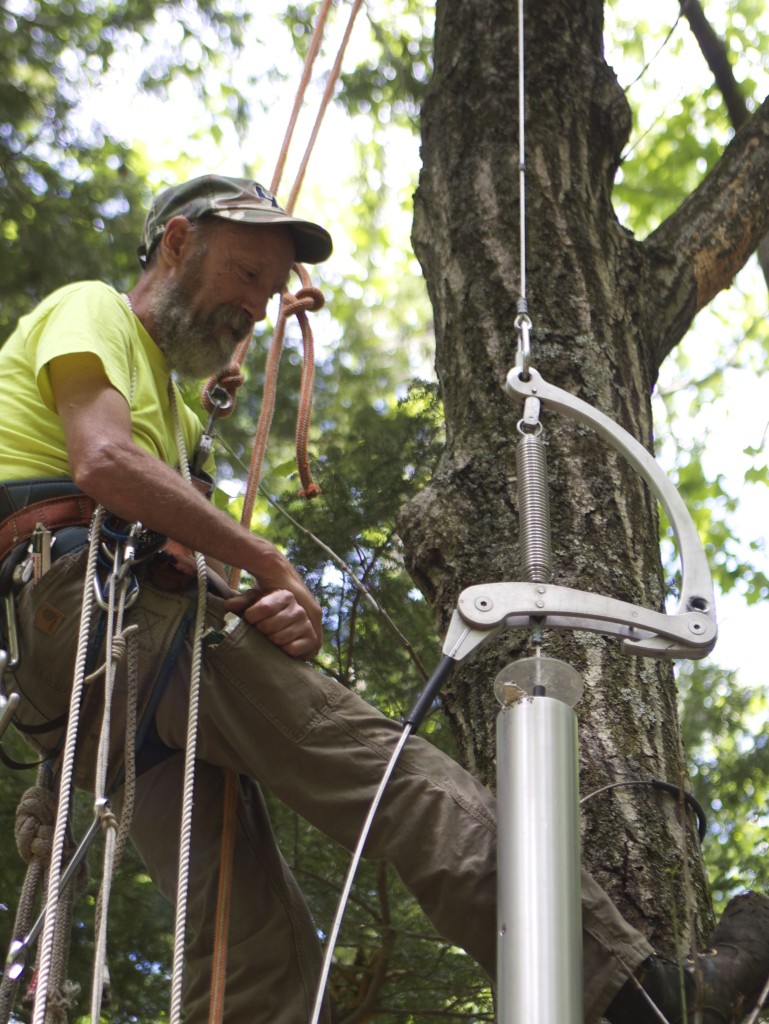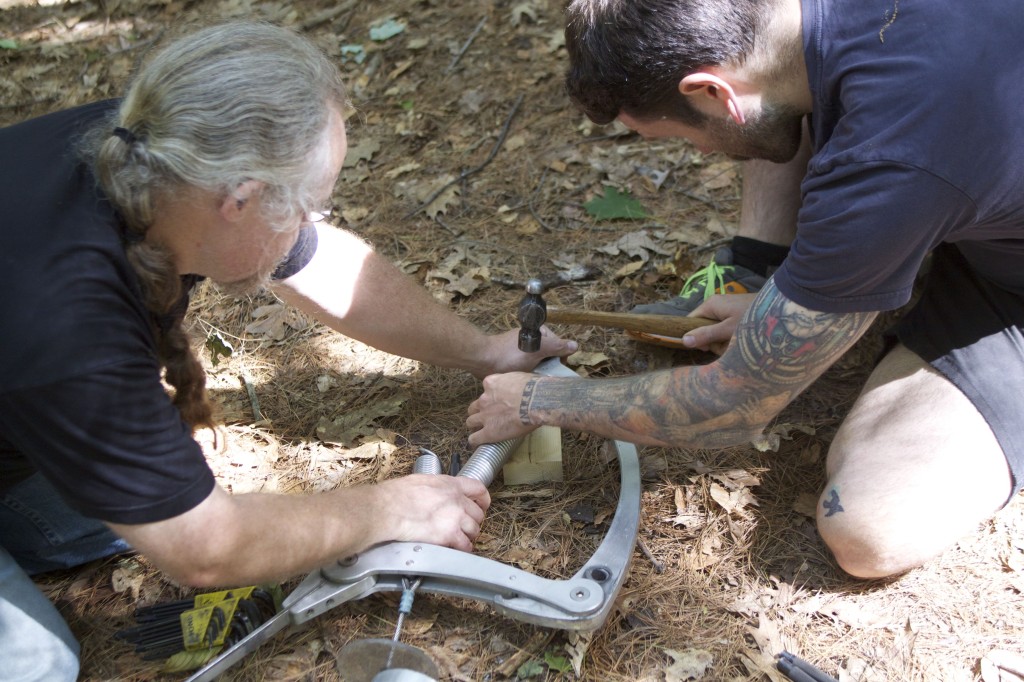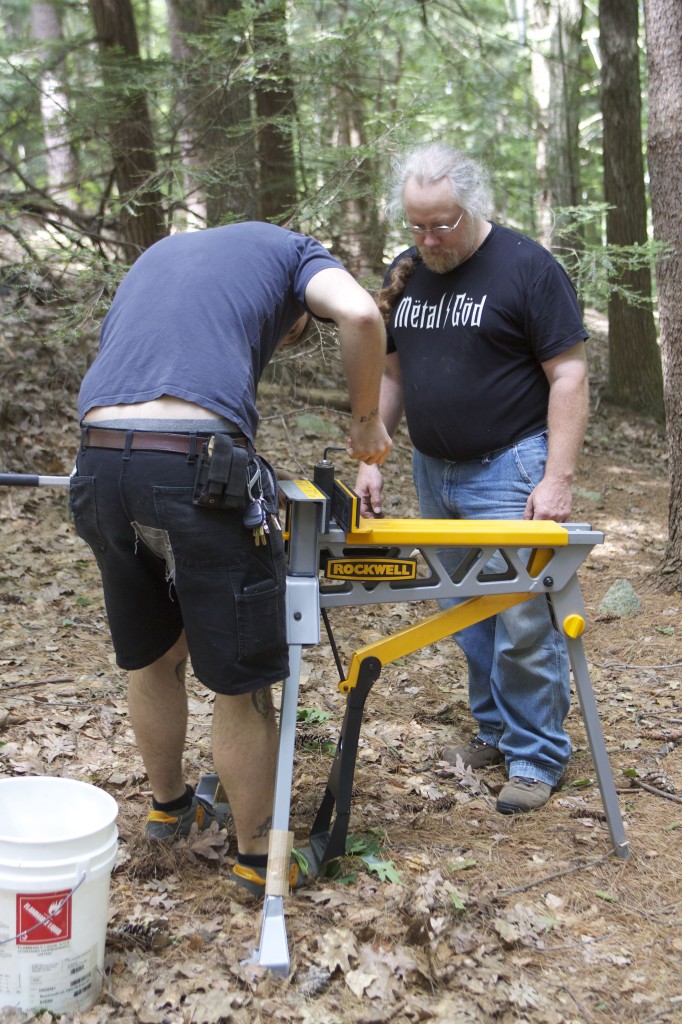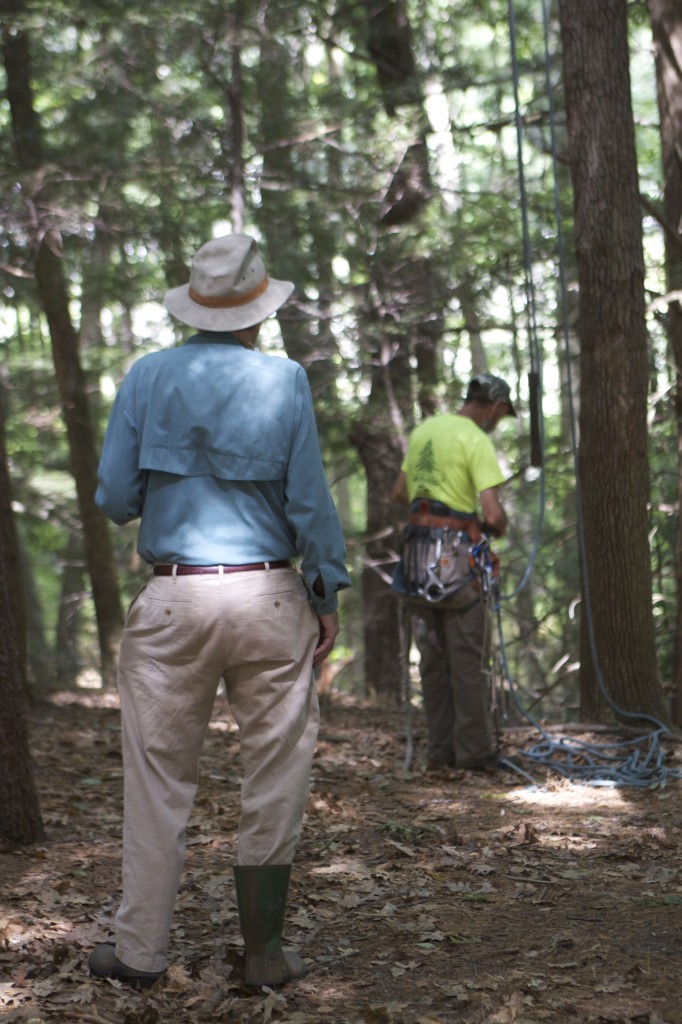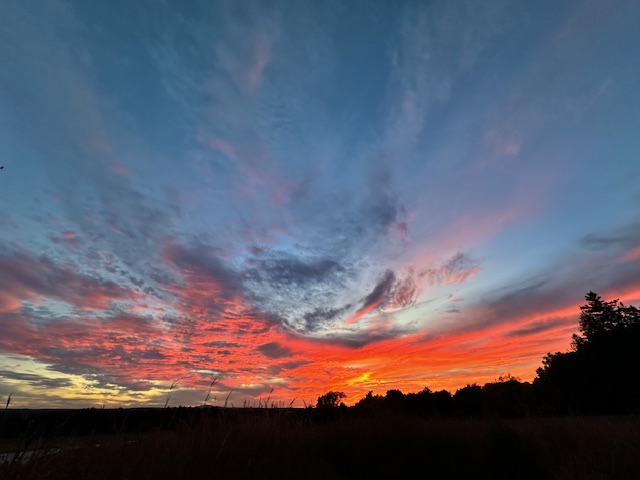The Bells are Back! – March 2014
Visitors to the Forest Bells on the GCT’s Blackman Field and Woods property know that three of the bells have been missing since fall 2013. They were removed for repairs, and we’re happy to report that all six bells are up and making wonderful music again.
The Forest Bells were created by local artist and craftsman Paul Matisse in 1995, commissioned by the inaugural Artist’s Valentine project, and installed on land owned by Arthur and Camilla Blackman. The Blackmans donated the land to the GCT in 2000, and the Trust has been the steward of the land and bells since then.
Like any piece of outdoor engineering, the Bells require attention and maintenance. Paul and his staff have been both attentive and generous in helping to keep the Bells in good working order. Over the years, we’ve discovered that the main spring at the top of each bell is prone to failure. When this spring breaks the hammer rests against the bell, making it impossible to ring. We’ve also found that the arm and hammer assembly can dent and damage the bells as they swing around.
Local arborist and bell-hanging wizard George Brackett provides the expertise to both install and remove the Bells. Last fall he took down the three non-working Bells and they were delivered to Paul’s shop in Groton. Paul’s staff analyzed the failures and found solutions. Modifications were made to the arm and hammer to prevent further damage, and a wholly new spring design was installed. The bells were also re-coated with Nyalic a transparent protective coating.
But there were still three Bells in the forest without these improvements.
Paul, George and Ken and Joseph from Paul’s staff set out on June 19th to set up a field repair shop in the woods to complete the job. The three repaired bells were re-installed, and then each of the three remaining bells was taken down. All modifications were installed and each was re-coated with Nyalic. The completely refurbished Bells were then rehung in their proper locations.
Paul has since re-visited the site and reports they are again ready to make beautiful music in their hemlock grove. All they need are visitors to explore, discover, and ring them!
To find the Forest Bells, take Old Ayer Road south toward Ayer from Main Street near the Mobil Station. Then, turn left onto Indian Hill Road and go all the way to the end. Park cars, but not near the house at the end. Walk back to the end and bear left up a dirt road into the trees. Continue along this road, passing at one point under power lines and continuing down into forest. At the next obvious fork, with the main path going up to the right, turn sharp left on to the side road. About 50 yards later there are a group of fallen trees barring an old road leading uphill to the right. Walking over or around the fallen trees, follow that road up the hill. Continue until you find yourself in a grove of hemlocks, quite different from the pines and oaks all around. You are at the Forest Bells.


